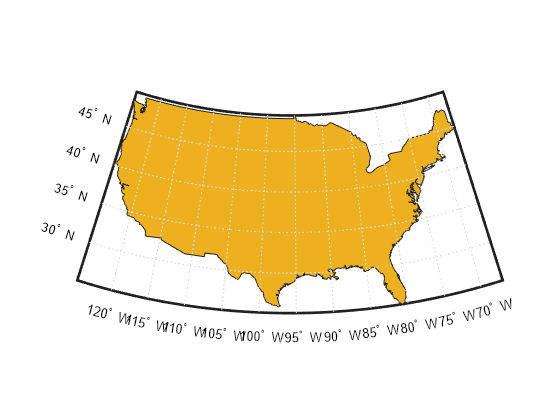areaint
Surface area of polygon on sphere or ellipsoid
Description
Examples
Input Arguments
Output Arguments
Algorithms
The
areaintfunction measures areas enclosed by arbitrary polygons by using a line integral approach based on Green's Theorem. The accuracy is inversely proportional to the distance between the polygon vertices.When you specify
ellipsoidas a nonspherical ellipsoid, the function converts the latitude data to the auxiliary authalic sphere.
Alternative Functionality
Find the areas of polygon shapes represented by geopolyshape and
mappolyshape objects
by using the area
function.
Version History
Introduced before R2006a
